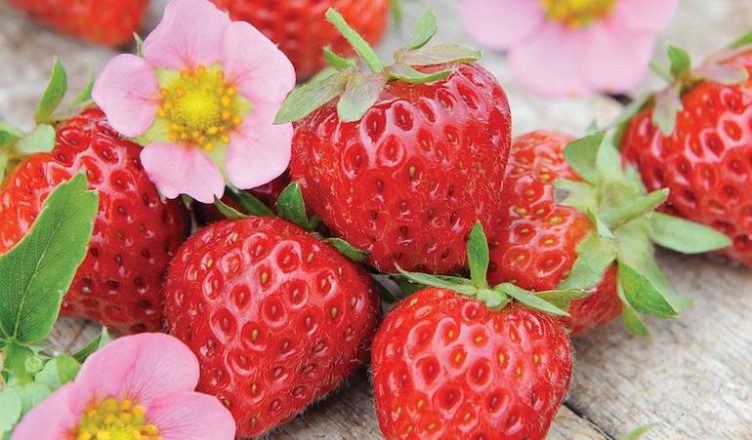The flavour of warm, sun-ripened strawberries picked fresh from your own garden is something to savour. These delicious and aromatic fruits are the quintessential summer treat. But why settle for expensive supermarket strawberries when they’re so easy to grow at home?
Here we’ll show you how to grow strawberry plants in your veg plot, hanging baskets, and containers.
Which strawberry should I grow?
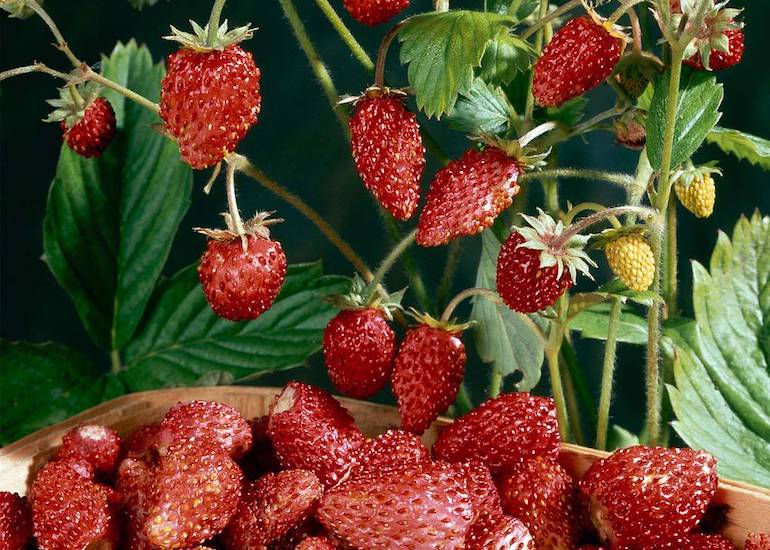
These ‘Mignonette’ alpine strawberries bear dainty, sweet berries through the summer months.
Choose from alpine (wild strawberries), summer-fruiting, or perpetual-fruiting strawberry varieties:
- • Alpine strawberries like Migonette produce lots of very small and sweet berries from July through to September.
- • Summer-fruiting strawberries like Sweetheart produce a heavy flush of larger fruits in early and mid-summer.
- • Perpetual-fruiting strawberries (or ever-bearing varieties) like Mara Des Bois, Flamenco, and Anais are a great choice if you don’t have much space because they produce fruit in flushes from early summer right through to early autumn.
If you have plenty of growing space, planting rows of early, mid, and late season strawberries maximises your harvest, keeping your fridge stocked all summer long. Take a look at our Full Season Collection for inspiration.

Where to plant strawberries
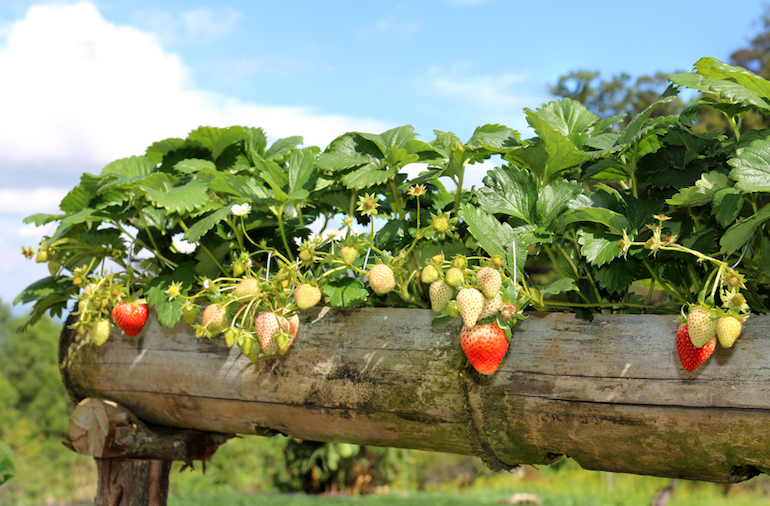
Strawberries generally prefer plenty of sunlight, but if you’ve got a shaded garden, try other varieties.
Plant your strawberries during the spring or autumn. They favour a sunny and sheltered position in fertile, free-draining soil. Improve your soil with lots of organic matter like compost or well-rotted manure prior to growing strawberry plants.
Does your garden suffer from a lack of sunlight? Don’t rule out planting strawberries because though summer and perpetual fruiting varieties won’t produce such a big crop, they will grow in semi shade. If in doubt, sow alpine varieties which actually prefer a slightly shadier location.
How to plant strawberries
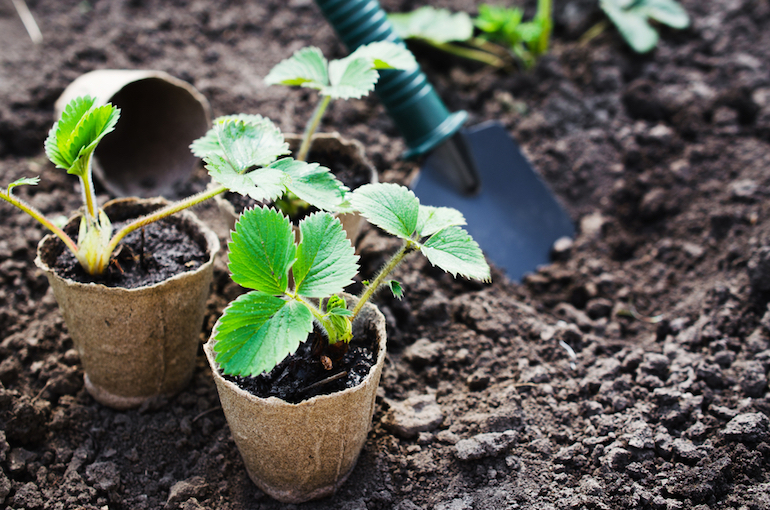
When planting, give your strawberries plenty of space to grow.
For better cropping and easy access, it’s best to give your strawberries plenty of space. Use a trowel to dig a hole big enough to accommodate the roots of the plant, and if you’re growing strawberries in the ground, plant them 45cm (18″) apart, leaving 75cm (30″) between rows.
If you’re planting strawberry runners, spread the roots out in the hole and make sure the crown of the plant is resting at soil level. The same goes for planting strawberry plants in pots – the crown should be level with the soil surface.
If you plant strawberries too deep, they might rot, but if you leave the crown protruding from the soil, the plant will dry out and die. Firm your plants in well and water thoroughly.
How to grow strawberries in hanging baskets and containers
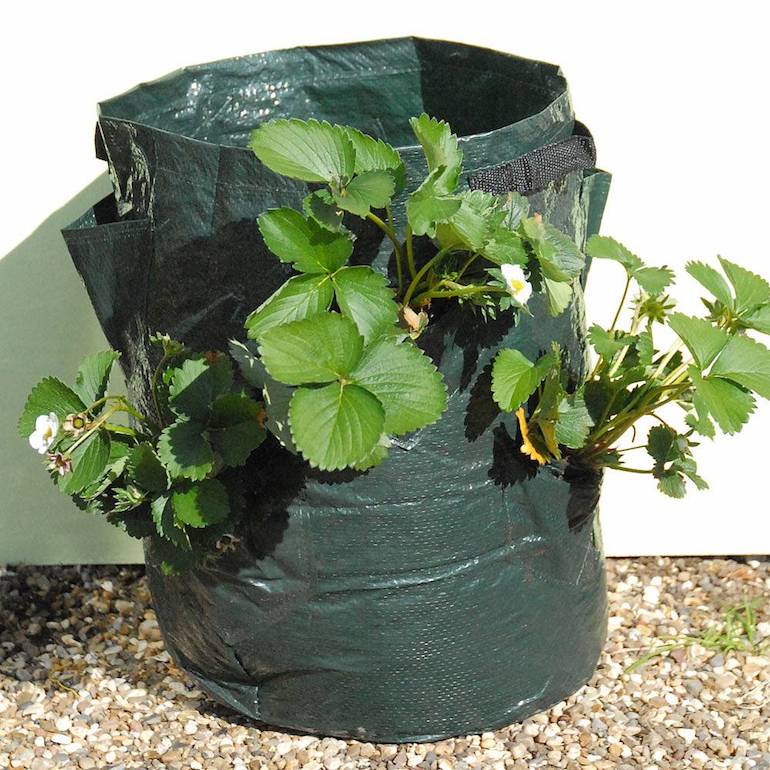
Consider trying Thompson & Morgan’s ‘Strawberry Patio Planter’ if you’ve got the space.
Strawberries are well-suited to hanging baskets, patio containers, and strawberry planters, and are ideal for those with limited space. Growing your strawberries like this also keeps them safely away from slugs, snails, and small animals which enjoy the fruits as much as we do.
For a 12″ hanging basket it’s best to limit yourself to three or four strawberry plants so they’ll each have enough light, water and nutrients to thrive. Do incorporate water-retaining granules and slow-release fertiliser into the compost before planting.
Always remember to check the compost daily in hot weather – water if the top half-inch of compost feels dry. And if you’re still a little unsure, check out our article on how to plant up hanging baskets.
Feed, water and harvest!
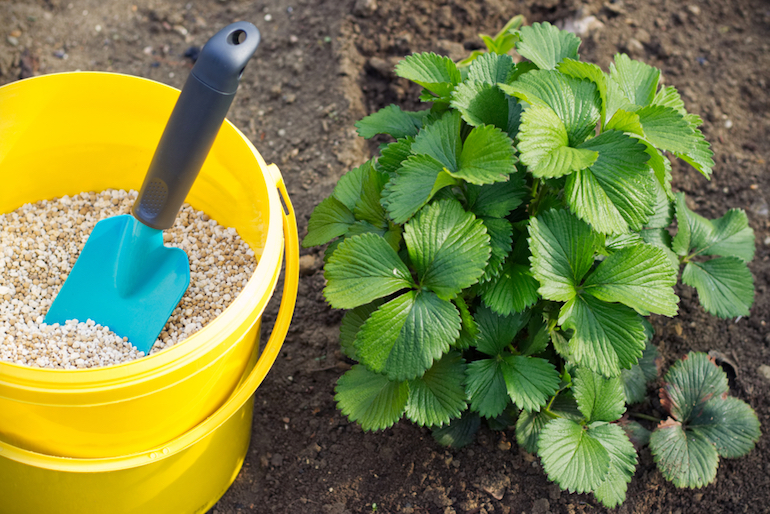
Keeping the soil well-manured and fertilised is key in getting the best out of your strawberries.
For really bumper crops of juicy strawberries, you need well-manured soil. If your soil is particularly poor then work a slow-release fertiliser into the soil surface in the spring. Then it’s all about watering, tending your plants and keeping hungry pests at bay:
- • Water frequently while new plants establish and during dry periods.
- • If growing strawberries in pots or hanging baskets, feed them every two weeks during the growing season with a balanced fertiliser. When flowering begins, switch to a high-potash liquid fertiliser to encourage good fruiting.
- • As the fruits develop, place dry straw or mulching fabric underneath to stop soil splash blemishing the fruit.
- • It’s also worth netting your strawberries before they turn red to protect them from hungry birds. If you’re growing strawberries in rows, a net tunnel is easy to install. It might also be worth investing in a fruit cage, especially if you’re also growing currants.
- • Some varieties of strawberry produce runners – stems with young strawberry plants along the length. Remove these as they appear so that the plant’s energy goes towards flowering and fruiting.
Strawberry aftercare
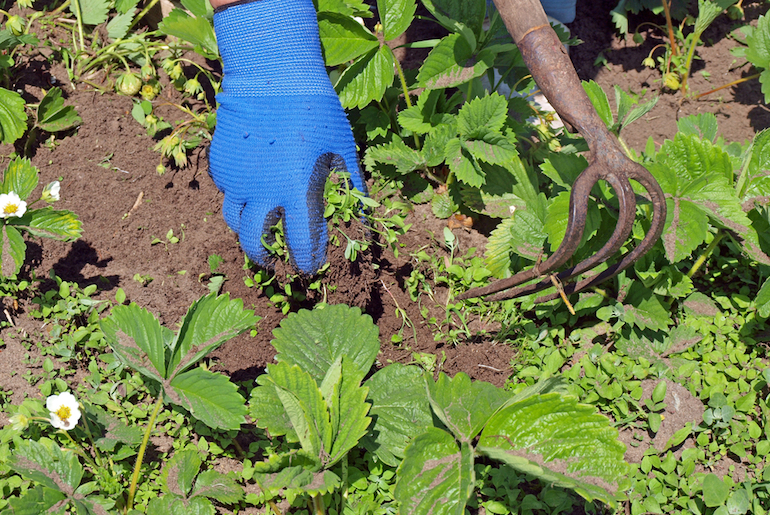
Keeping your strawberry plants weed free will help the plant to flourish as summer progresses.
After cropping, remove any straw and netting to allow better air flow around the crown of the plant. As the summer progresses, keep on top of weeding and continue to remove any runners. Clear away dead foliage as this can harbour pests and diseases over winter. Each spring spread a general purpose fertiliser around your plants along with a mulch of well-rotted manure or compost.
Strawberry crop rotation
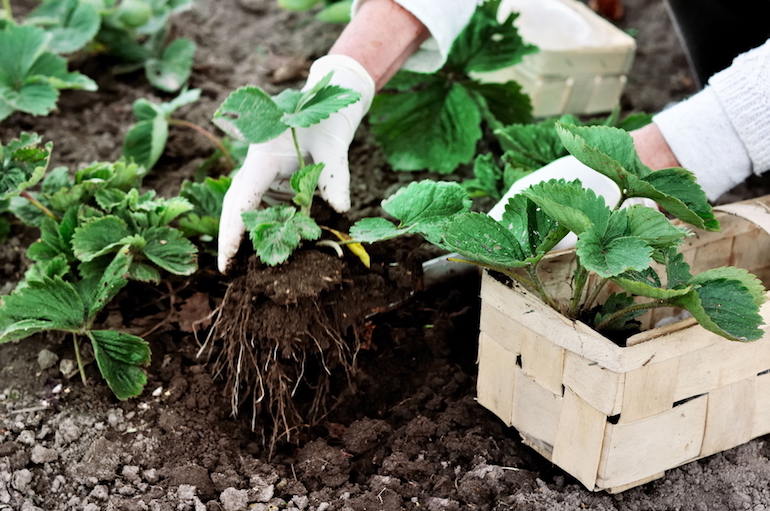
Every few seasons, replace and rotate where your strawberry plants live to get the best growth.
It’s best to replace strawberry plants after the third season because otherwise they lose vigour making harvests smaller, and the plants more susceptible to pests and diseases. If space allows, also move your strawberry beds to a different part of the garden to stop pests and diseases accumulating in the soil.
Growing strawberries from seed
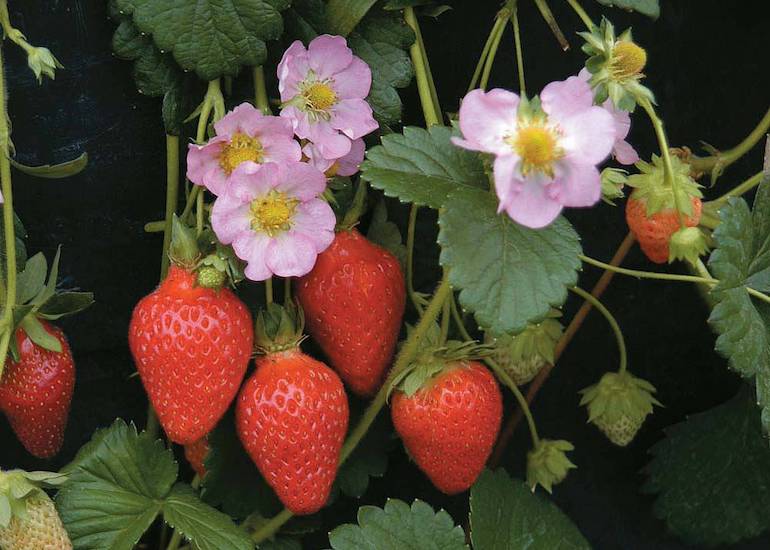
If you want to grow strawberries from seed, consider the ‘Florian’ variety.
Growing strawberries from seed takes a little bit of patience because they take up to a month to germinate and will usually crop the following year. Nevertheless, this is a good way to grow more unusual varieties that aren’t available as plants. A particular favourite, ‘Florian‘, has pink flowers and produces fruit both on the parent plant and the runners, making it ideal for a hanging basket.
Growing strawberries indoors
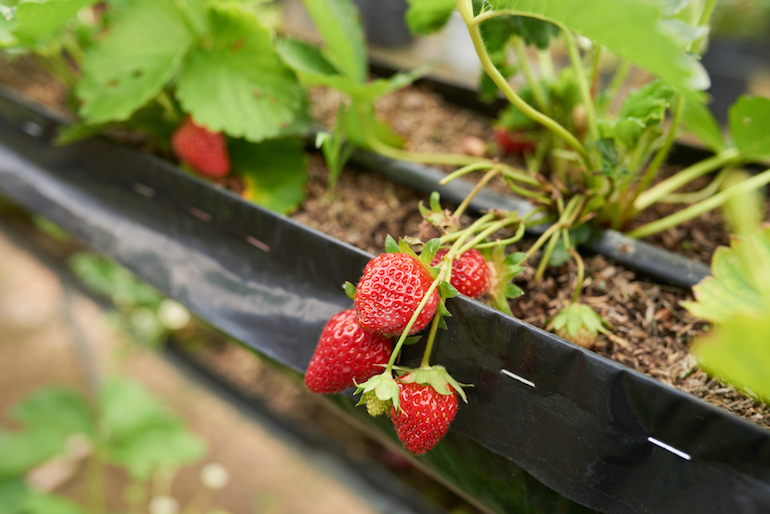
By growing your strawberries in greenhouse, fruit will be ripe for harvesting a month earlier.
Growing strawberries in a greenhouse or conservatory means they’ll fruit up to a month earlier than outdoor plants.
- • If you don’t have a greenhouse or polytunnel, try placing a cloche over your outdoor strawberry plants in February – it can advance ripening by up to three weeks.
- • If you’re growing strawberries indoors, it’s best to plant each strawberry plant into a 15cm (6″) pot of general multipurpose compost.
- • Leave your strawberry plants outside during the autumn and winter because they require a chill period to initiate flowering the next summer.
- • From February you can bring the plants back indoors to a bright position, and water as needed. At this stage, take care not to let the temperature rise above 16C because this inhibits flowering.

Do remember to pollinate indoor strawberries. To do this, lightly brush a soft paint brush around the central yellow part of each of the flowers. Also remember to feed your plants with a balanced fertiliser every two weeks until flowering begins, at which point you should switch to a high-potash liquid fertiliser for the best fruiting.
That’s how to grow a scrumptious harvest of summer strawberries. All you need to do now is add a dollop of cream and reach for a glass of Pimms. Enjoy.
Watch: ‘How to plant strawberries’ with Thompson & Morgan
source : Sue Sanderson

